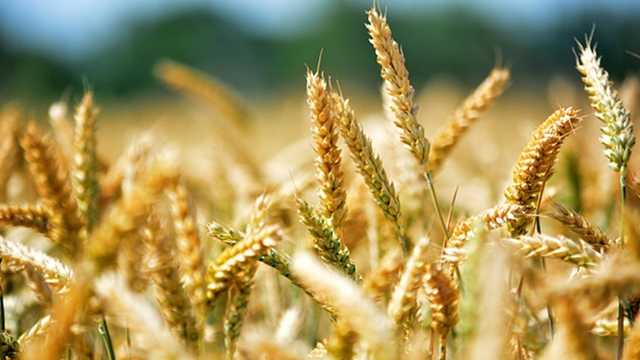SAM
Published:2020-01-12 22:35:25 BdST
Wheat production fall as farmers switch to other crops
FT ONLINE
Wheat acreage has continued to shrink in the country as many farmers switch to maize and vegetables farming for higher profits.
Wheat blast that first hit wheat fields in 2015 has also discouraged the farmers in the south-western regions from wheat cultivation resulting in a decline in its total production, officials said.
Though the government has set a target to bring 0.38 million hectares of land into cultivation this season, wheat was cultivated on 0.32 million hectares of land as of January 09, according to the monitoring and evaluation unit of the Department of Agriculture Extension (DAE).
The government has also set a target to grow 1.3 million tonnes of wheat in the current fiscal year 2019-20 (FY'20).
Wheat is cultivated in the country during the period between November and mid-January while its harvest goes on between February and April.
The cereal, considered as the second staple after rice, mainly grows in Rangpur, Rajshahi, Khulna and some parts of the Dhaka division on a large scale where the winter season lasts for a long time.
The Bangladesh Bureau of Statistics (BBS) data showed that both wheat planted area and its production saw a gradual drop in the last five years.
Wheat acreage was 0.444 million hectares with an output of nearly 1.35 million tonnes in FY'16 which declined to 0.415 hectares in FY'17.
The downward trend continued as acreage dropped to 0.351 million hectares in FY'18 with a production of 1.09 million tonnes, the Statistical Yearbook FY'18, published by BBS, showed.
Wheat production from 0.328 million hectares of land declined to just 1.06 million tonnes in FY'19, according to preliminary estimates of the BBS.
An official at monitoring unit, however, said wheat acreage might increase to some extent or remain static this fiscal year (FY'20).
Mizanur Rahman, deputy director of monitoring unit, said cultivable area and production declined drastically in Khulna division in the last few years amid blast fear.
Production in Khulna division was hardly 80,000 tonnes in FY'19 which was 0.25 million tonnes in FY'16, he said.
Acreage in the northern regions also decreased to some extent as farmers switched to maize, vegetable and other crops finding its cultivation more profitable, he added.
Dr Israil Hossain, director of Bangladesh Wheat and Maize Research Institute (BWMRI), said the institute, as well as DAE, requested the farmers in Khulna, Jashore and Kushtia regions not to grow wheat in FY'16 and FY'17 following a deadly wheat blast that attacked wheat field in FY'15.
"Later from 2018, we started a campaign to motivate the farmers to cultivate wheat after taking many precautionary measures."
He said production might have declined in the southern districts but there were no reports on blast during the last two seasons.
"We're trying our best to boost domestic production, develop better breeds and increase the crop's acreage. We have released a blast-resistant variety-BARI Gom 33--which will have been cultivated on a large scale this year," he said.
Chairman of Bangladesh Agrarian Research Foundation (ARF) Prof Abdul Hamid said apart from fungal diseases of crops, low prices of the produce were forcing a number of farmers to switch to other crops.
Farmers sold wheat at Tk 620-Tk 650 a maund in 2019 against a minimum production cost of Tk 750 a maund, he said, adding that it is the same peasantry who mainly started wheat farming on their paddy fields.
Prof Hamid said, "We found that many growers in the northern regions cultivated paddy in 2018 instead of wheat thanks to record-breaking rice prices in that calendar year."
"So, farmers these days are much selective and selection of crops depends on profits."
He also pointed out that acreage has been shrinking at a time when wheat imports are on the rise for increased domestic consumption as a substitute for rice and for its increased use in the processed food industry.
The demand for the cereal is above 7.0 million tonnes, according to the food ministry.
Between July 01 last year and January 07 this year, wheat import was 3.20 million tonnes worth US$ 800 million, mostly by the private sector, the food ministry data showed.
Meanwhile, prices of different qualities of wheat and flour (atta and maida) increased by 2.0-18 percent in a month in the domestic market, according to the Trading Corporation of Bangladesh (TCB).
Loose atta was selling at Tk 32-Tk 34, packet atta at Tk 40-Tk 45, loose maida at Tk 40-Tk 42 and packet maida at Tk 46-Tk 48 a kg in the kitchen markets.
Unauthorized use or reproduction of The Finance Today content for commercial purposes is strictly prohibited.


